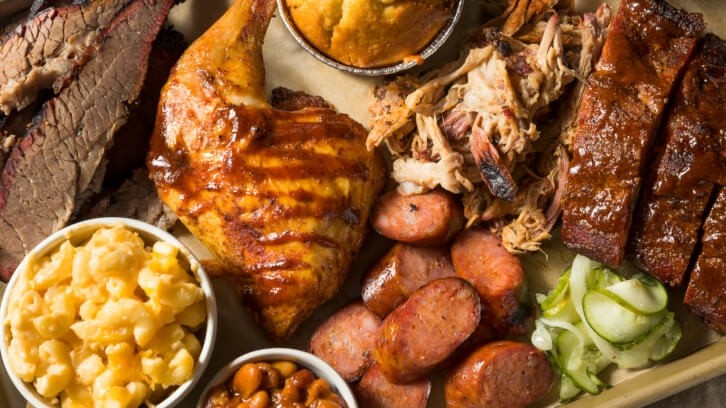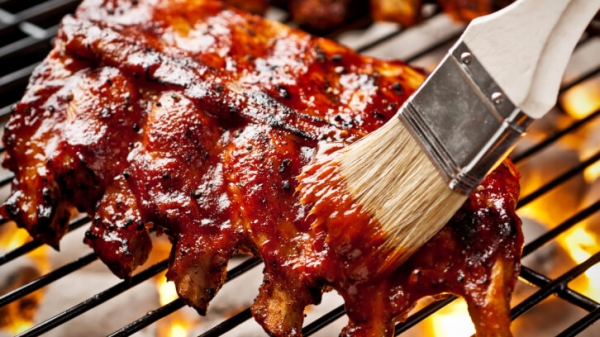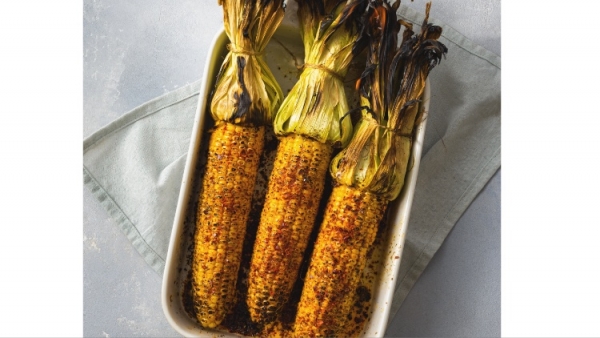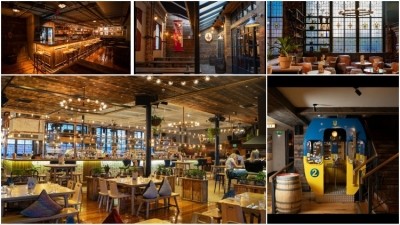Why is American smokehouse and BBQ style food becoming more popular?

Pubcos such as Mitchells & Butlers have entered the category in the past 12-months, with the launch of their Orleans Smokehouse brand in February this year, while established and independent firms are leading the way in the segment by championing provenance.
This has also been reflected in other areas of hospitality, such as QSR, as well as in the off-trade, with the retail outlets increasingly stocking a wider range of barbecue style sauces and rubs.
Sandwich shop Subway, for example, recently launched a range of smokehouse and BBQ inspired flavours, including BBQ meatball, Chipotle Cheese Philly Steak and Stacked Bacon and Cheese melt, all of which are available as sandwiches or as salads.
The process is defined as the flavouring, browning, cooking or preserving of food by exposing it to smoke or smouldering material such as wood in a smokehouse or smoker.
Smoking can be done four ways, cold, warm and hot or through smoke flavouring using liquid smoke, though these methods alone do not preserve food.
Passion and authenticity
Different types of wood also impact the flavour imparted on the food. In the US, hickory, mesquite, oak, pecan, alder, maple, and fruit tree woods, such as apple, cherry, and plum, are commonly used for smoking.
Chester-based brand Hickory’s is a shining example of success in this segment in the UK, having been crowned the Best Brand/Concept in the 2024 Publican Awards last month.
Founded in 2010 by Neil McDonnell, the firm aims to deliver Southern American hospitality and BBQ food, inspired by a trip taken by McDonnell, who fell in love with the concept and saw it as the “future”.
Though Hickory’s managing director John Welsh told the Morning Advertiser (MA) offering American barbecue style food was far from the “burnt bangers and crispy burgers” associated with a barbecue in the UK.
“It’s all about low and slow smoking of meat, using spices that have been worked on over the years and are typical of the southern states.
“We invest heavily in all areas of the business whether that's the quality of the food that goes in the smokers, training, site refurbs, or equipment, but it's all backed up by passion and authenticity.”
“It’s about getting all your friends and family together for big gatherings and occasions."
He continued: “We've had to adapt it slightly to get it right for the UK market, but we pay massive homage to what happens in the US and we're really keen to bring back all the great things we've discovered over the years [from trips to the Southern states], but it takes lots of effort, lots of spend and a lot of time.
“We are passionate about smoked food, but we try to offer it in a bit more of a restaurant setting as opposed to in the US, where it is more canteen style, with full table service for instance. We are trying to open it up to more people.”
Welsh also urged smoking on site ensured “integrity”, which he said was fundamental to providing guests a quality experience in this segment, adding “we want to do the concept justice”.
Each Hickory’s boasts a dedicated, highly trained pitmaster and high-quality smokers with an open kitchen to showcase the hard work and care that goes into crafting this style of food.
“It's quite a challenging style of food to take on and scale up. We passionately believe you have to smoke on site because otherwise you lose your integrity to some degree.
“If you start doing it from a central kitchen or something, it's just not authentic.
“Consistency can also become difficult, so you've got to back it up with training, especially when it comes to things like pitmasters for instance; it's an art form as opposed to just a process you have to follow and that takes that takes time to learn”, Welsh added.
Meanwhile Hickory’s head of marketing Lisa Owen added the increased availability of smokehouse and barbecue products in the off-trade, has in some ways helped boost popularity in the on-trade.
Though the smokehouse and barbecue concept is about much more than just food but rather about Southern American hospitality as a whole experience, Owens added.
She continued: “It [should be] like being welcomed into somebody’s home where they can’t do enough for you.
“It’s experimental comfort and food in large portions. You can be a fan of ribs but there are all sorts of different flavours or sauces. We spend a lot of time training our teams to help encourage guests to try something different.”
This “indulgent” side of things, Welsh added, was helping drive consumers to smokehouse and barbecue style venues.
He continued: “The food is addictive; it is comfort food. In the UK, the equivalent would be pie or fish and chips or something, but every restaurant and pub does that, we're offering a style of comfort food that is very different.
“It’s about getting all your friends and family together for big gatherings and occasions.
“Customers want to go big for things like that, they want it to be special, and that's what America is known for, even more so the southern state in terms of that generosity of portion and generosity of soul as well. No good party started in the salad restaurant.”
Though Welsh added “experimentation” was starting to take form in America within the category, namely with African and Middle Eastern spices.
While this hasn’t made its way into the UK market yet, Welsh added it showed how people are “pushing the boundaries” across the pond.
Lumina Intelligence insight manager Maggie Davis told the MA the UK segment was being “revitalised” by independent operators focusing on live fire cooking, provenance and sustainability.
Low and slow
“Different styles inspired by world cuisines like Korean barbecue are also gaining traction”, Davis added.
Bidfood national account manager for Oliver Kay suppliers, Jo Rudkin, said another area operators could focus on to drive growth in this area was using vegetables in place of meat.
Driven by the cost-of-living-crisis, Rudkin explained this offered venues a good opportunity to tap offer barbecue style food while catering for a wider range of consumers and helping keep margins in check.
“Mushrooms are a fantastic plant-based alternative to put on the barbecue and operators should look to utilise them.
“Sauté in herbs with a little butter and you’ve got yourself a delicious mushroom steak, packed full of flavour and much more cost effective.
“Cauliflower is also a great option. A versatility king amongst veg. Douse in a sticky, spicy sauce, charred on the barbecue and finished with a dusting of sesame seeds and you have some delicious cauliflower wings”, she advised.
Meanwhile Campbell Brothers sales director Neil McCole added pork was currently the “best value protein” and would stand out on menus.
He said: “[Pork] trumps beef’s versatility with cuts from steak, bacon, sausage, baby-back ribs and much more, perfect for the barbecue.
“Alternatively, if operators are looking to prepare something with minimum effort but maximum flavour, try pork shoulder.
“Season with a dry rub of spices, sugar and salt, and barbeque low and slow. Just shred and serve, doused in a sticky barbecue sauce, in a seeded bun.
“A melt-in-the-mouth pulled pork burger that will feed many, whilst importantly keeping costs, like the cooking temperature, nice and low.”









